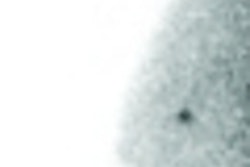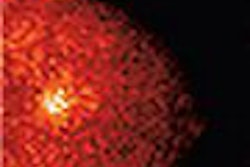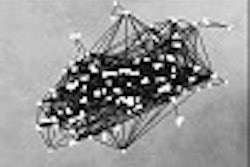When a woman with breast implants arrives for mammography, there's a chance the imaging specialists will have to contend with a rupture, leakage, or at the very least, more demanding positioning requirements. But how often do adverse events involving breast implants occur during mammography?
Fortunately, not too often, according to reports filed with the Food and Drug Administration, but they do happen. S. Lori Brown, Ph.D., and colleagues from the FDA's Center for Devices and Radiological Health in Rockville, MD, took a closer look at these cases in the Journal of Women's Health.
Brown's group searched the FDA's MedWatch database for adverse events associated with silicone gel breast implants, saline implants, and mammography. Up until November 2002, they came up with a total of 714 reported cases, 66 of which claimed that implant problems were related to mammography.
Patients with augmented breasts undergo diagnostic screening, as well as four additional views (Eklund views), which are taken with the implant pushed back against the chest wall and the breast pulled forward over it.
"This maneuver to optimize visualization of augmented breast tissue should be used with maximum care to avoid causing implant rupture or exacerbation of rupture," Brown and co-authors wrote (Journal of Women's Health, May 2004, Vol. 13:4, pp. 371-378).
In one report, the patient said that rupture occurred with full breast and prosthetic implant compressions rather than Eklund views. The break in the capsule sent the contents of the implant into the parenchyma.
Another patient complained of "soreness in right breast for several years after she heard a 'pop' on that side during a mammogram." A third woman said six days after undergoing a mammogram, her implant had caved in, resulting in pain. She asserted that she had never experienced this problem until after her last mammogram.
The mean age of patients reporting adverse events was 49.9, with a mean time from implant of 14.5 years. While those who filed the incidence reports did make a direct correlation between mammography and implant rupture or post-exam pain, the study authors noted that "the accuracy and completeness of these reports are not verified by the FDA." Compression may be an issue, but how much an implant will be affected by pressure varies according to age, size, thickness, and elastic properties, they added.
The researchers suggested that mammographers may want to consider adjunct imaging with MRI or ultrasound for these patients. However, these modalities are not without pitfalls.
"Extracapsular rupture is usually manifest as local spread of silicone in the breast and is not well depicted on fast spin-echo T2-weighted images," reported Dr. Wendie Berg and colleagues in a study that looked at MRI of extracapsular silicone from breast implants. "Water-suppressed inversion-recovery T2-weighted images are often needed to identify extracapsular silicone. Distinction of the bulge in the fibrous capsule from herniation through the capsule remains problematic" (American Journal of Roentgenology, February 2002, Vol. 178:2, pp. 465-472).
Sonography can be valuable for imaging subglandular implants and areas that are not seen on mammography, commented Dr. Thomas Kolb and colleagues in their study. But in an earlier paper, Dr. Debra Ikeda and co-investigators found an adequate 77% accuracy rate for ultrasound in augmented breasts (Radiology, October 2002, Vol. 225:1, pp. 165-175; Plastic and Reconstructive Surgery, December 1999, Vol. 104:7, pp. 2054-2062).
With regard to the sources for the reports to the FDA, the majority came from patients (28.8%), followed by physicians (24.3%), and other medical personnel (22.8%). A little over 21% came from unknown reporters, while 2% came from attorneys.
Whether this will become yet another source of legal concern for mammographers remains to be seen. Medico-legal expert Dr. Leonard Berlin, chairman of radiology at Rush North Shore Medical Center in Skokie, IL, said that his research has not yielded any malpractice lawsuits related to implant injuries sustained during mammography, but that doesn't mean they aren't out there.
"I suppose radiologists should become aware of potential medico-legal jeopardy when performing or supervising mammography on women with implants," Berlin noted. "But of course, it will be difficult to convince radiologists of this unless we can find one or more specific cases in which radiologists have been held liable in such instances."
It may behoove radiologists to keep up with the MedWatch reports. Depending on the nature and severity of the report, the FDA will contact the device manufacturer, but not necessarily any physicians who are named, Brown explained in an e-mail to AuntMinnie.com.
"In some instances, usually deaths, we may contact the physician directly for more information about the reported incident, but we don't always do this -- we receive hundreds of thousands of reports. The reports are accessible on the FDA Internet, but there is typically a lag between our receiving them and their availability," Brown cautioned.
By Shalmali PalAuntMinnie.com staff writer
June 15, 2004
Related Reading
Implants may interfere with mammograms but tumors found at similar stages, January 28, 2004
Breast implants do not raise risk of brain cancer, January 27, 2004
'Threatening' article to mammo expert throws malpractice case into disarray, December 16, 2003
Many silicone breast implants rupture within 10 years of surgery, July 25, 2003
Copyright © 2004 AuntMinnie.com



















